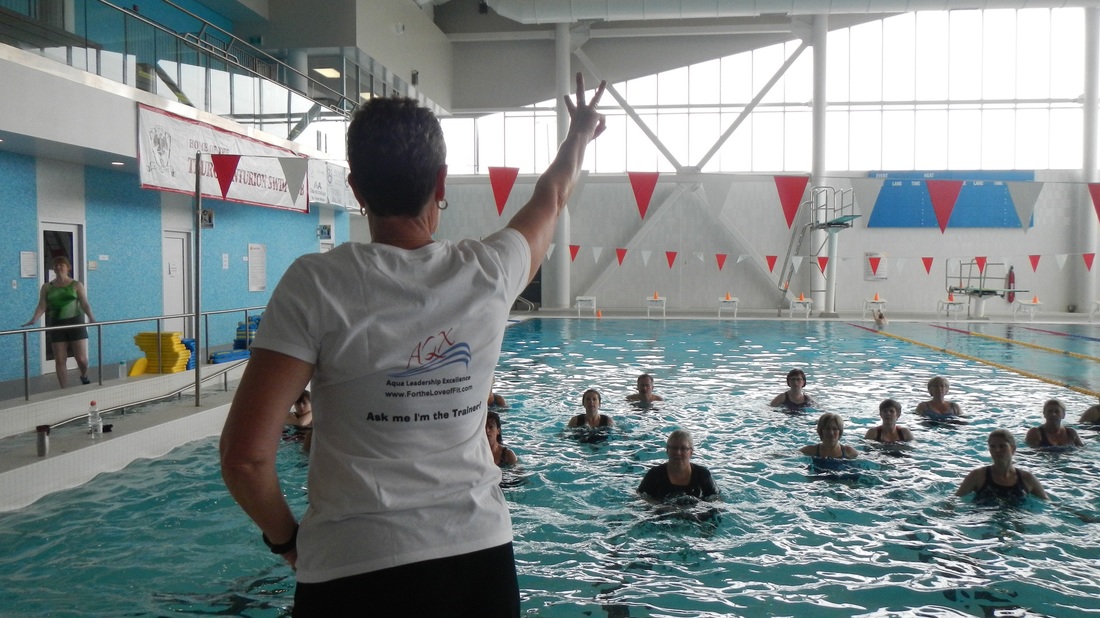 Aqua virgins (newcomers to aqua fitness), as well as some regular participants, often have questions about the way classes are taught. Aquatic exercise has amazing fitness benefits, but is a different kind of workout. People need to understand why and how things are done at the pool. They need to learn: why the instructor teaches a certain way, how to move well, and why their results depend on their focused effort. A number of years ago, at a pool reception desk in Kitchener Ontario, I saw a participant handout. It was designed for people attending aqua fitness classes, and it was brilliant! This post is a revision and update of that document. Thanks to the wise folks in Kitchener, who recognized that working well in the water requires knowledge and skill. I hope this article will prompt you to create or reinforce client education at your pool. Here is a list of typical participant questions and answers appropriate to our style of teaching. Because the list is quite long, it may be best to present one point per week on the pool lobby bulletin board, or facility website. I have also offered 'Learn to Aqua Fit' training seminars that included about 1 hour of theory in a classroom, followed by an aqua fitness class. We created some very savvy exercisers. Keep track of the questions you get, and start your own participant education plan!
Anchoring is usually done specifically for muscle strengthening of the core, and limbs. Faster movements, with a choice of buoyancy options (light bouncing, or propulsive - where you are pushing off the floor to move up, out of the water), are often used during the cardiovascular component of your aqua fitness class. You may still choose to eliminate bouncing while doing cardiovascular work (in chest deep water), since this protects your joints while creating added work for your core.
Challenging: In the pool, balance, core strength, the respiratory muscles and heart experience unique training benefits different from land-based exercise. Cardiovascular conditioning and muscular strengthening exercises often happen simultaneously during aquatic exercise. Muscles can be worked in unique ways because any direction you move is resisted. Adaptable: Aquatic resistance is easily altered to suit to a wide variety of needs, from Olympic athletes to weekend warriors, average people, and people in rehabilitation for health issues. Aquatic resistance, water depth, movement techniques and exercise intensity can be adjusted for a customized workout. You can choose the class and the pace within a workout that suits your specific needs on a given day! Buoyant: Working vertically in water unloads your feet, knees, hips, back and arms, allowing you to move freely. Many people who could not run on land can run in the pool, effectively training their cardiovascular system. Both buoyancy and hydrostatic pressure help circulation, allowing your heart to work more efficiently. Your heart will beat slower during aqua fitness than it would for an equivalent workload on land – yet your training results can be the same.
What questions do you hear regularly at your pool? Would a participant handout improve client knowledge and satisfaction? Is it time to start a 'Learn to Aqua Fit' seminar for the start of each season? I welcome your thoughts on these questions! Reference:
2 Comments
1/27/2023 10:46:31 pm
It's interesting when you said that you should focus on learning what the instructor is giving to obtain the proper swimming knowledge. After moving to our current area, my son and daughter told my wife that they wanted to learn to swim for our summer vacation. They asked if I had any idea what could be the best option for having a swimming class. Thanks to this helpful article, I'll be sure to tell them that I will consult a trusted swimming class as they can with the proper swimming process.
Reply
Leave a Reply. |
AuthorConnie is an AquaStretch™ Trainer and Facilitator who has been using AquaStretch™ with clients since December 2010. Archives
February 2016
Categories |

 RSS Feed
RSS Feed